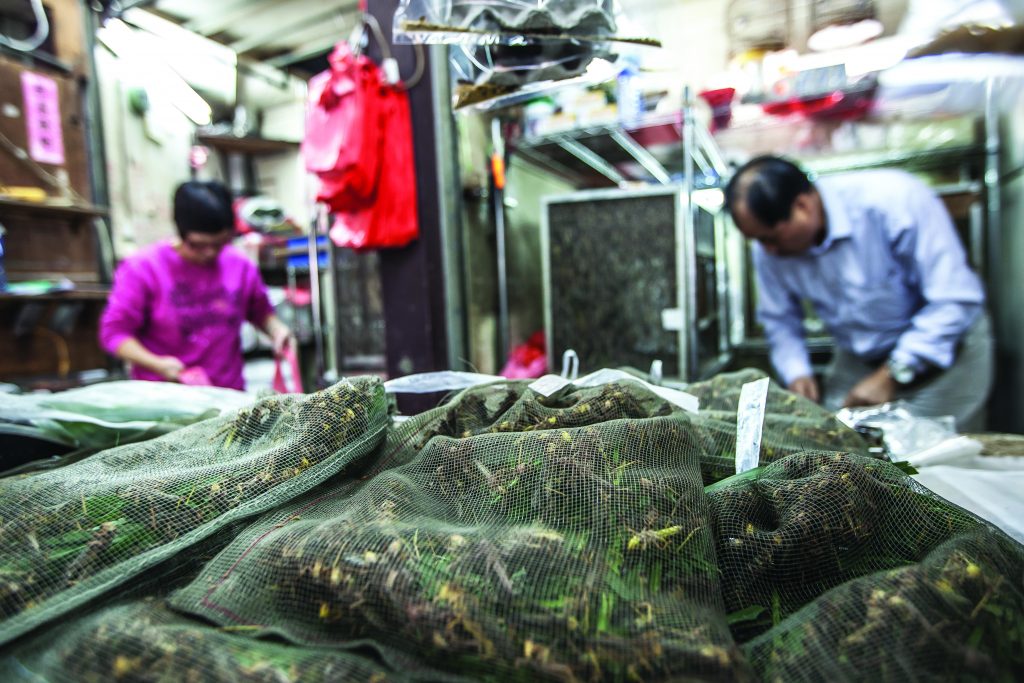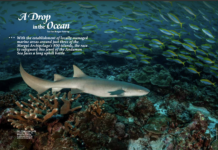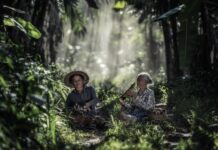Insects have been eaten throughout Asia for thousands of years. Now, environmentalists are hoping that entomophagy goes global.
Text Aaron “Bertie” Gekoski and Sophie Fresson
Photos Aaron “Bertie” Gekoski
Creepy-crawlies might give some people the heebie-jeebies, but humans have been consuming bugs for a very long time. In China, records show that insects have been on the menu for at least 3,200 years, and written recipes using bugs have been found in literature dating back to the Ming Dynasty circa 1368.
Today, there are 29 entomophagous (meaning “feeding on insects”) Asian countries, each culture favouring different species, flavours, and cooking methods. The larvae of the Asian palm weevil – also known as sago grubs – are a delicacy found in Malaysia and Indonesia. Cooked, they’re said to taste similar to bacon, and are even sometimes spread on pizza. Those that make it past their unsettling, bulbous appearance liken a squirming live grub to coconut.
Sago grubs aren’t the only worms consumed in Asia. Bamboo worms are a common sight in Thailand’s night markets. Their crispy shell and soft insides have a salty flavour with an aftertaste of corn, apparently.

Elsewhere throughout the continent, Cambodia’s tarantulas are said to resemble crab and are believed to boost virility. In China, bees are ground into a traditional remedy for sore throats. Dragonfly boiled with ginger in coconut milk is a sweet treat in Indonesia. And in Vietnam, Papua New Guinea and Laos, a number of crispy critters are regularly munched on – including grasshoppers, giant water bugs, centipedes, and cicadas.
Beginning a bug craze
The practice of entomophagy in Asia would have begun as a necessity. When food was scarce, insects represented a nutritious and easily obtainable food source, particularly in areas closer to the equator where there is an abundance of bugs. Today, however, the consumption of insects has transcended its humble beginnings and is no longer just viewed as a necessity, but as a choice.
Insects have creeped and crawled their way onto the menus of various Michelin star restaurants, most notably Copenhagen-based Noma, voted the best restaurant in the world four times running. Noma serves a range of bug-based dishes, with live black ants being a signature dish of the critically-acclaimed head chef. There are even entire cookbooks dedicated to bug gastronomy.
Interest in edible insects has surged in recent years following release of a report from the United Nation’s Food and Agricultural Organization (FAO) in 2013. It would seem Asian entomophagous cultures have been ahead of the curve, as the report had one fundamental piece of advice for people globally: eat more bugs. It is thought these crispy critters could offer a healthier and more sustainable food choice for the future.
The doom-and-gloom statistics of our future may feel all too familiar. However, they are important. By 2050, the world population is expected to have swollen to upwards of nine billion, whilst the demand for meat will have grown by 44 percent (FAO). The FAO’s Henning Steinfeld has called beef “the caviar of the future”. Food security is set to become one of the most pressing issues of our time.
It might be like sushi, where everyone first thought that eating raw fish was gross; now sushi is everywhere. Anyway, in comparison to prawns, crickets are beautiful!
– Laurent Chellapermal, President and CEO of Next-Food
Indeed, according to environmental groups “Earth Overshoot Day” has already been and gone. This year, August 2 marked the point whereby humanity used up more natural resources, such as water, soil and clean air, than can be replenished in a year. The use of resources after this point is considered unsustainable.
Animal agriculture is already a huge drain on the planet. Growing feed for the industry utilises about a third of Earth’s cropland and a third of all landed fish. Meanwhile, livestock are responsible for producing more greenhouse gases than the world’s planes, cars and other transport forms combined.

Related story: The Buzzkill
Related story: Tardigrada
Related story: The False Scorpion
The future of food?
We are in desperate need of “greener” food choices. Edible insects are obtained either by wild harvesting, semi-domestication or farming. Insect farming is perceived as an increasingly attractive answer to some of the world’s biggest questions regarding food security and production. Compared to cattle, they offer a much lower ecological footprint, yet have similar protein profiles.
Insects require considerably less land and water than conventional farm animals, yet emit a fraction of the greenhouse gases. They have shorter life spans and reproductive cycles; they can be farmed quickly, and in large numbers, over small areas. Some argue that insect farming is more humane, as a number of edible insects will naturally congregate.
Insects also require a fraction of the feed. As cold-blooded creatures, they have high feed-meat conversion rates. Crickets, for example, can convert roughly two kilograms of feed into a one kilogram weight increase, while a cow would require eight kilograms.
Related Story: Traditional foods of Asia [Infographic] – coming soon!

While they’re not much to look at, insects are, in fact, highly nutritious. Studies have found some edible species contain higher levels of omega-3 fatty acids and minerals than conventional meats, along with comparable amounts of protein.
Insect harvesting and farming also offers opportunities for improved social welfare, especially in developing countries. Minimal technique and equipment is required, and such activities would both improve diets and create jobs. This growing industry presents options for entrepreneurship in transitional and developed countries worldwide.
One man who believes that insects could help feed the world is Laurent Chellapermal, President and CEO of Next-Food, the largest international supplier of edible insects and owner of the biggest farm in Asia. Laurent was bitten by the entomophagy bug when living in Australia, studying aquaculture. “At first I wanted to use insects to make fish meal. Then, when studying crickets, I found out that they are widely eaten in some parts of the world. After more research I learned that they are one of the most sustainable food sources around, plus a very healthy alternative.”
So, he set up Next-Food. Laurent believes the idea of eating insects will catch on – once people get past the psychological barriers. “It might be like sushi, where everyone first thought that eating raw fish was gross; now sushi is everywhere. Anyway, in comparison to prawns, crickets are beautiful!” Eating them is a lot better for the environment, too.
For more stories from this issue, get your copy of Asian Geographic Issue 127, 2017











